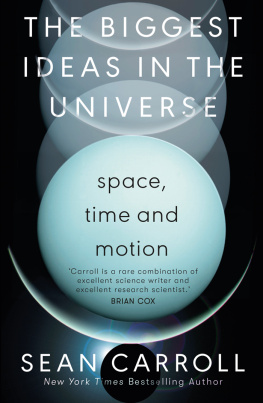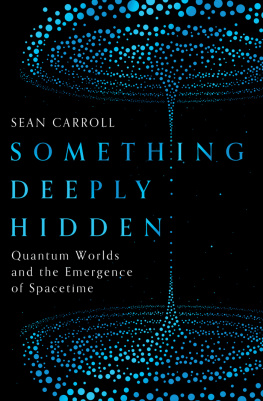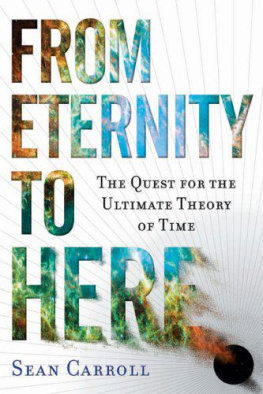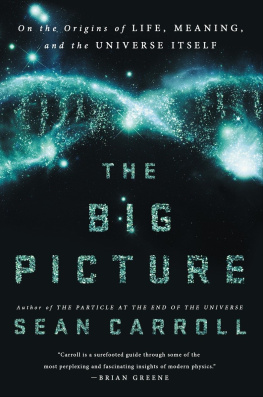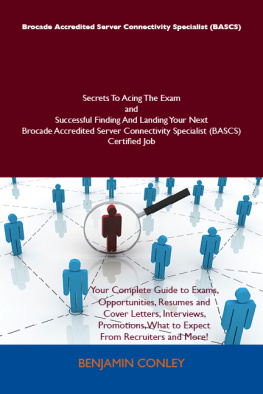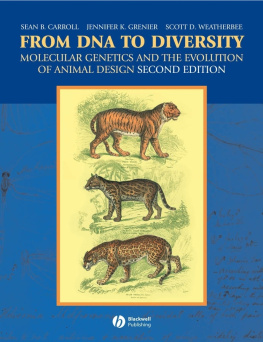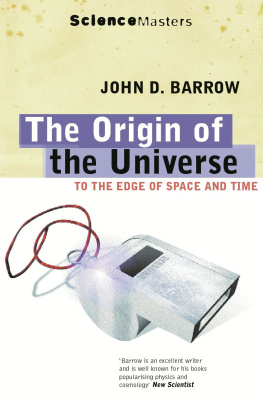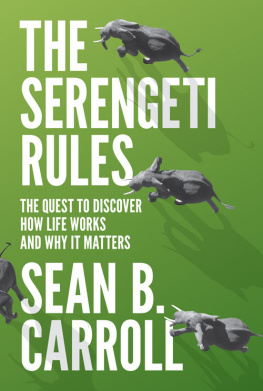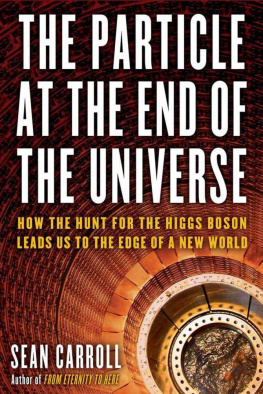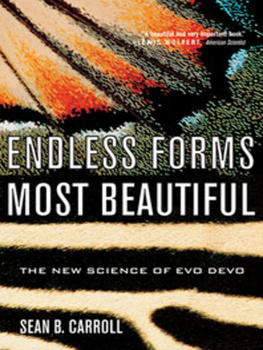Sean Carroll - The Biggest Ideas in the Universe: Space, Time and Motion
Here you can read online Sean Carroll - The Biggest Ideas in the Universe: Space, Time and Motion full text of the book (entire story) in english for free. Download pdf and epub, get meaning, cover and reviews about this ebook. publisher: Oneworld Publications, genre: Romance novel. Description of the work, (preface) as well as reviews are available. Best literature library LitArk.com created for fans of good reading and offers a wide selection of genres:
Romance novel
Science fiction
Adventure
Detective
Science
History
Home and family
Prose
Art
Politics
Computer
Non-fiction
Religion
Business
Children
Humor
Choose a favorite category and find really read worthwhile books. Enjoy immersion in the world of imagination, feel the emotions of the characters or learn something new for yourself, make an fascinating discovery.
- Book:The Biggest Ideas in the Universe: Space, Time and Motion
- Author:
- Publisher:Oneworld Publications
- Genre:
- Rating:3 / 5
- Favourites:Add to favourites
- Your mark:
- 60
- 1
- 2
- 3
- 4
- 5
The Biggest Ideas in the Universe: Space, Time and Motion: summary, description and annotation
We offer to read an annotation, description, summary or preface (depends on what the author of the book "The Biggest Ideas in the Universe: Space, Time and Motion" wrote himself). If you haven't found the necessary information about the book — write in the comments, we will try to find it.
The Biggest Ideas in the Universe: Space, Time and Motion — read online for free the complete book (whole text) full work
Below is the text of the book, divided by pages. System saving the place of the last page read, allows you to conveniently read the book "The Biggest Ideas in the Universe: Space, Time and Motion" online for free, without having to search again every time where you left off. Put a bookmark, and you can go to the page where you finished reading at any time.
Font size:
Interval:
Bookmark:
Praise for Sean Carroll
As a ten-year-old physics enthusiast, I would have loved The Biggest Ideas in the Universe. With this book, Sean Carroll rejects traditional elitism in physics and welcomes in anyone who knows only a little algebra but wants to understand the whole universe.
Chanda Prescod-Weinstein, author of The Disordered Cosmos: A Journey into Dark Matter, Spacetime, and Dreams Deferred
Sean Carroll is a wizard of empathy. In this short book, the first of three on The Biggest Ideas in the Universe, he anticipates whats always confused you about physics and then gently guides you to enlightenment and ultimately, to newfound wonder.
Steven Strogatz, author of The Joy of X and Infinite Powers
No-nonsense, not-dumbed-down explanations of basic laws of the universe that reward close attention.
Kirkus
Sean Carrolls greatest gift isnt that hes an expert on the fundamentals of physics, which he is, but that he never speaks down to his reader. He assumes that anyone, even the uninitiated, can learn to understand the formulae that underlie complicated concepts like space and time. It is a pleasure to read his work, a greater pleasure still to get a world-class education from such a witty, thoughtful teacher.
Annalee Newitz, author of The Future of Another Timeline
Carroll has the remarkable ability of putting the reader utterly at ease with his lucid and addictive prose.
Jim Al-Khalili
Sean Carroll is a fantastically erudite and entertaining writer.
Elizabeth Kolbert
ALSO BY SEAN CARROLL
Something Deeply Hidden
The Big Picture
The Particle at the End of the Universe
From Eternity to Here

A Oneworld Book
First published in Great Britain, the Republic of Ireland and Australia by Oneworld Publications, 2022
This ebook edition published 2022
Copyright Sean Carroll, 2022
The moral right of Sean Carroll to be identified as the Author of this work has been asserted by him in accordance with the Copyright, Designs, and Patents Act 1988
All rights reserved
Copyright under Berne Convention
A CIP record for this title is available from the British Library
ISBN 978-0-86154-288-8
eISBN 978-0-86154-289-5
Image of hyperbolic space courtesy of Wikimedia Commons.
All other illustrations by Jason Torchinsky and Sean Carroll.
Oneworld Publications
10 Bloomsbury Street
London WC1B 3SR
England
Stay up to date with the latest books, special offers, and exclusive content from
Oneworld with our newsletter
Sign up on our website
oneworld-publications.com
To Jennifer
My dream is to live in a world where most people have informed views and passionate opinions about modern physics. Where you knock off after a hard day at work, head down to the pub with friends, and argue over your favorite dark-matter candidate, or competing interpretations of quantum mechanics. A world where, as kids are running around at a birthday party, one parent says, I dont see why anyone thinks there should be new particles near the electroweak scale, and another immediately replies, Then how in the world are you going to address the hierarchy problem? People have opinions, after all, about supply-side economics or critical race theory. Why not inflationary cosmology and superstring theory?
Thats not quite the world in which we live. Even more than most other academic disciplines, physics is a field by and for specialists. Practitioners talk to one another in a highly specialized jargon, one that is dominated by mathematical concepts most people have never heard of, much less mastered. There are sensible reasons why this is the case, but it doesnt have to be this way. The situation is due in large part to the ways in which physicists tend to share their knowledge with the rest of the world.
If you are a non-expert interested in learning about modern physics, you have basically two options. One is to remain at a popular level of explanation, where you can learn about some of the relevant concepts without digging into the technical or mathematical details. You can read books, go to lectures, watch videos, listen to podcasts. The good news is that we do have a vibrant ecosystem of such resources, and its possible to learn quite a bit, albeit in a somewhat haphazard way. But at the end, you know youre not getting the real stuff. What you get are images and metaphors, rough translations of the underlying mathematical essence into ordinary language. You can go an impressive distance down this route, but something vital will always be missing.
The other route is to become a physics student. That could be literally at a university, or by assembling the right textbooks and online resources. Along the way you will need to become proficient at quite a bit of mathematics: calculus and differential equations most importantly, but also aspects of vector analysis, complex numbers, linear algebra, and more. The journey will be rewarding, but frustratingly slow. It typically takes at least a year of introductory courses before a student ever hears about relativity or quantum mechanics. And most physics students can get an undergraduate degreeor even go all the way to obtain a PhDwithout learning about particle physics, black holes, or cosmology. Those goodies are reserved only for specialists in particular subfields.
The gap between learning physics as an interested amateur, relying on metaphors and murky translations, and becoming a credentialed expert, comfortable with pushing around equations of intimidating complexity, is wide but not unpassable. Just because I dont want to be a professional race-car driver doesnt mean I shouldnt be allowed to drive at all. Surely there is a way to engage with some of the authentic essence of modern physicseven if that means looking at a few equationswithout slogging through years of a standard curriculum.
Youve come to the right place!
The Biggest Ideas in the Universe is dedicated to the idea that it is possible to learn about modern physics for real, equations and all, even if you are more amateur than professional and have every intention of staying that way. It is meant for people who have no more mathematical experience than high school algebra, but are willing to look at an equation and think about what it means. If youre willing to do that bit of thinking, a new world opens up.
Here is the thing about equations: They are not that scary. They are just a way to compactly summarize a relationship between different quantities. Its one thing to be told that, according to Einsteins theory of general relativity, mass and energy cause spacetime to curve. It is quite another to be given Einsteins equation:

The English-language sentence gives you a kind of feeling for what general relativity is about, but the equation tells you what is really going on, in precise and unambiguous terms. You can read all of the words you like, but until you understand this equation, you wont really understand Einsteins theory.
The problem is that this equation is utterly opaque if you dont know what the symbols mean. Its gibberish. To wrap your head around it, you need to understand the individual roles of all the numbers and letters, including the subscripts and , which are from the Greek alphabet, for goodness sake. There are good reasons why typical physics students take years to make it that far.
Next pageFont size:
Interval:
Bookmark:
Similar books «The Biggest Ideas in the Universe: Space, Time and Motion»
Look at similar books to The Biggest Ideas in the Universe: Space, Time and Motion. We have selected literature similar in name and meaning in the hope of providing readers with more options to find new, interesting, not yet read works.
Discussion, reviews of the book The Biggest Ideas in the Universe: Space, Time and Motion and just readers' own opinions. Leave your comments, write what you think about the work, its meaning or the main characters. Specify what exactly you liked and what you didn't like, and why you think so.

